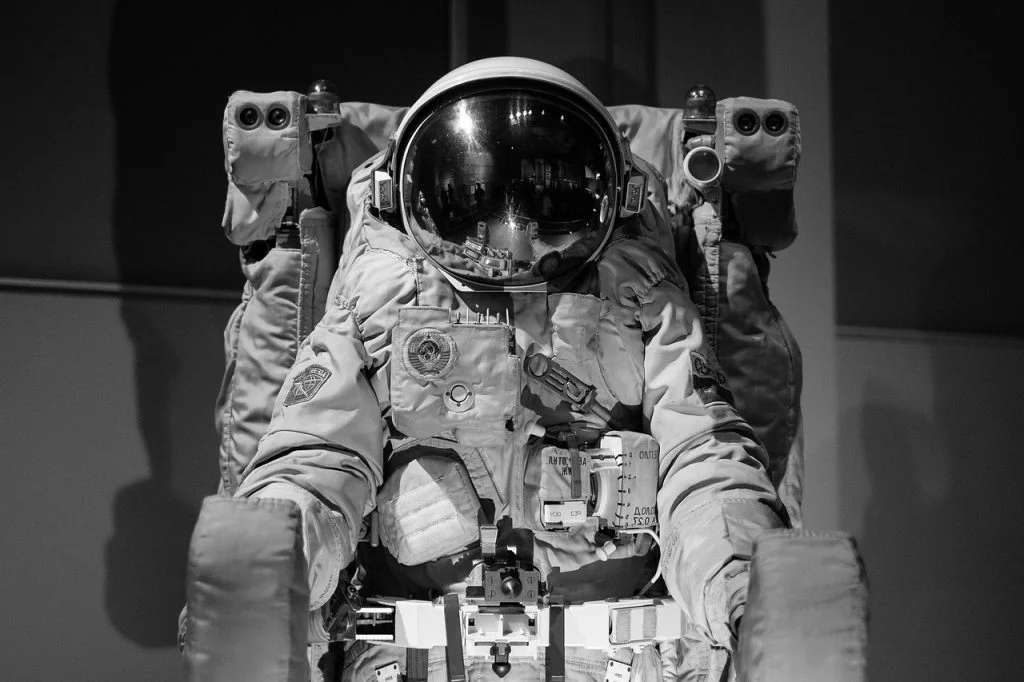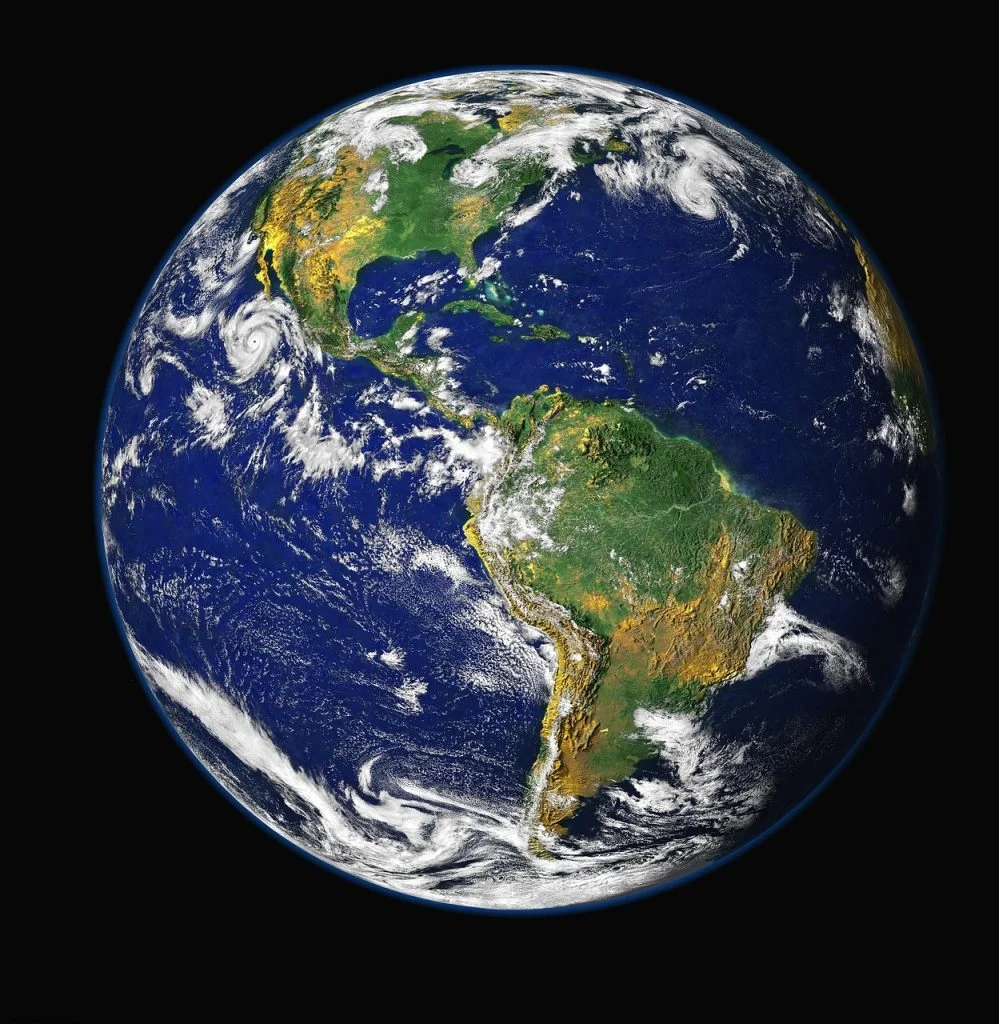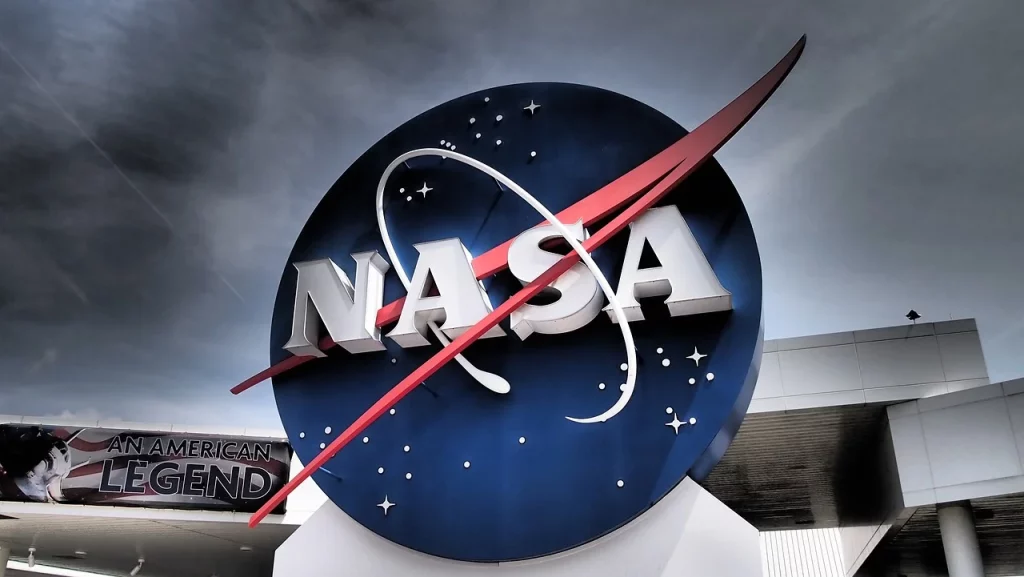Let me tell you about the time I tried to recreate the moon’s gravity in my living room. Spoiler alert: It involved a lot of broken furniture and a confused dog. My obsession with NASA started with a starry-eyed dream and a telescope that I swear was pointed more at my neighbor’s window than the night sky (purely accidental, I assure you).
Now, I’m here to share ’50 facts about NASA’ that are more fascinating than my attempts at zero-gravity living. Did you ever wonder why astronauts’ footprints stay on the moon? Or how is a space shuttle like a giant, orbiting science lab? Stick around, and let’s dive into the universe of NASA together. Who knows, you might even find out if aliens are real (or at least if they like the same TV shows as us).
To confine our attention to terrestrial matters would be to limit the human spirit.
Stephen Hawking
NASA Facts
Join me on an exciting expedition through interesting NASA facts. Keep in mind that there’s a quiz orbiting at the bottom of this page; read carefully to successfully land on it.
- NASA, the National Aeronautics and Space Administration, was established in 1958.
- The first American to orbit Earth was John Glenn in 1962, aboard NASA’s Friendship 7 mission.
- NASA’s Apollo 11 mission in 1969 made Neil Armstrong and Buzz Aldrin the first humans on the Moon.
- The Space Shuttle program, spanning from 1981 to 2011, was NASA’s longest-running manned space program.
- NASA’s Voyager 1 spacecraft is the most distant human-made object in space.
- Hubble Space Telescope, launched in 1990, has provided some of the most detailed images of distant galaxies.
- Mars Rovers like Spirit, Opportunity, and Curiosity have explored the Martian surface, sending valuable data back to Earth.
- Skylab, NASA’s first space station, orbited Earth from 1973 to 1979.
- NASA’s New Horizons mission conducted the first-ever flyby of Pluto in 2015.
- The International Space Station, a joint project with Russia, Europe, Japan, and Canada, has been continuously inhabited since 2000.
- NASA’s Juno spacecraft is studying Jupiter’s composition and magnetic fields.
- Chandra X-ray Observatory, launched in 1999, observes X-rays from high-energy regions of the universe.
- Kepler Space Telescope has discovered thousands of exoplanets in our galaxy.

- The Mars Science Laboratory, carrying the Curiosity rover, was the most complex mission ever to land on Mars.
- NASA collaborates internationally, contributing to missions like the James Webb Space Telescope.
- Parker Solar Probe is studying the sun’s outer atmosphere and solar wind.
- Artemis program aims to return humans to the Moon and establish a sustainable presence by the late 2020s.
- NASA’s Commercial Crew Program works with private companies to transport astronauts to the International Space Station.
- The Spitzer Space Telescope provided infrared views of the universe from 2003 to 2020.
- Orion, a new spacecraft for deep space missions, is being developed by NASA.
- NASA’s TESS mission is searching for exoplanets around nearby stars.
- LCROSS mission confirmed water ice in permanently shadowed lunar craters.
- The Apollo-Soyuz Test Project in 1975 was the first international human spaceflight mission.
- NASA’s Gravity Recovery and Climate Experiment (GRACE) satellites have monitored Earth’s water reserves.
- The InSight lander has been studying Mars’ interior geology since 2018.
- NASA’s Perseverance rover, launched in 2020, is exploring Mars’ Jezero Crater.
- Lunar Reconnaissance Orbiter has been mapping the Moon’s surface since 2009.
- OSIRIS-REx mission is studying asteroid Bennu and will return samples to Earth.

- Dragonfly mission will explore Saturn’s largest moon, Titan, in the 2030s.
- Mars Helicopter Ingenuity made the first powered flight on another planet in 2021.
- NASA’s SOFIA airborne observatory studies the universe in the infrared spectrum.
- The Solar Dynamics Observatory provides detailed imagery of the sun.
- WFIRST telescope, planned for launch in the 2020s, will study dark energy and exoplanets.
- Asteroid Redirect Mission planned to study and move a boulder from an asteroid.
- NASA’s Dawn mission was the first to orbit two extraterrestrial bodies.
- The Magnetospheric Multiscale Mission studies Earth’s magnetic field.
- Galileo spacecraft studied Jupiter and its moons extensively.
- Ice, Cloud, and Land Elevation Satellite (ICESat) measures ice sheet mass balance and cloud cover.
- The Twin Study examined the health effects of space on astronauts over the course of a year.

- Landsat satellites have been observing the Earth’s surface since the 1970s.
- SOHO satellite studies the sun, particularly its outer layer and solar wind.
- Cassini mission revealed detailed information about Saturn and its moons.
- NASA’s Deep Space Network communicates with space missions throughout the solar system.
- Earth Observing System satellites monitor global climate and environmental changes.
- The Great Observatories program included Hubble, Chandra, Spitzer, and Compton telescopes.
- Mars Atmosphere and Volatile Evolution (MAVEN) mission studies Mars’ atmosphere.
- SpaceX Crew Dragon is a part of NASA’s Commercial Crew Program for ISS transport.
- NASA’s Lunar Gateway is planned as a space station orbiting the Moon.
- Advanced Spaceborne Thermal Emission and Reflection Radiometer (ASTER) provides detailed images of Earth.
- Transiting Exoplanet Survey Satellite (TESS) has expanded the search for exoplanets.
NASA Myths

Having explored the beautiful cosmos of NASA, let’s now navigate the nebulae of myths and uncover reality.
- NASA Faked the Moon Landings
NASA’s Apollo missions successfully landed astronauts on the Moon six times between 1969 and 1972. Extensive evidence, including thousands of photos, rock samples, and independent tracking by other countries, supports these landings. - NASA Spends a Huge Portion of the US Budget
Actually, NASA’s budget is a small fraction of the overall US budget. As long as I found, it was less than 1% of the total. This modest investment has yielded significant advances in technology, environmental understanding, and scientific knowledge. - NASA’s Pen vs. Soviet Pencil
It’s often said that NASA spent millions developing a space pen, while the Soviets just used pencils. In truth, both space agencies initially used pencils. However, the space pen was developed independently and sold to NASA. - NASA Doesn’t Contribute to Everyday Life
On the contrary, NASA’s research has led to many technologies we use daily. From memory foam mattresses to scratch-resistant lenses, and even improved baby formula, NASA’s innovations have a way of finding a place in our homes. - NASA Is Only Focused on Space
While space exploration is a significant part of NASA’s mission, they also conduct important research on Earth. This includes studying climate change, monitoring natural disasters, and improving air travel safety. It’s not just about reaching for the stars, but also about caring for our home planet.
No products found.
NASA Quotes

Here is my list of my top five favorite quotes: I will be more than happy to hear which one is your favorite in the comments.
We choose to go to the moon in this decade and do the other things, not because they are easy, but because they are hard.
John F. Kennedy
John F. Kennedy’s iconic speech, setting a bold vision for space exploration, emphasizing the pursuit of challenging endeavors.
That’s one small step for man, one giant leap for mankind.
Neil Armstrong
Neil Armstrong’s first words upon stepping onto the Moon, capturing the monumental achievement of humankind in space exploration.
Houston, we’ve had a problem here.
Jack Swigert
The understated alert from Apollo 13 by Jack Swigert, highlighting the dangers and uncertainties of space missions.
Mystery creates wonder and wonder is the basis of man’s desire to understand.
Neil Armstrong
Neil Armstrong reflects on the human drive for exploration and understanding, a core aspect of NASA’s missions.
For the eyes of the world now look into space, to the moon and to the planets beyond.
John F. Kennedy
John F. Kennedy’s speech emphasizing the global fascination and importance of space exploration during the Space Race era.
NASA FAQ

As we leave the inspirational quotes behind, prepare to dock at the space station of FAQs. Read carefully, as your next mission is the quiz section, where your newfound knowledge will shine brightest.
- What does NASA mean?
“NASA” stands for National Aeronautics and Space Administration. It’s like the space exploration and research hub of the United States, focusing on everything from sending astronauts to space to studying our Earth and beyond. - Are NASA internships paid?
Yes, they are! If you land an internship at NASA, you’ll be happy to know that they typically offer paid opportunities. It’s not just about gaining incredible experience in space research and technology, but also about earning while you learn and contribute. - Can NASA control the weather?
No, NASA can’t control the weather. While they’re super talented at studying and understanding weather patterns and climate through their advanced satellites and research, controlling the weather is a whole different and currently impossible feat. They observe and analyze, but don’t have a weather control machine up their sleeves! - Are NASA images in the public domain?
Absolutely! Most images and videos that NASA captures are in the public domain. This means you can enjoy and use these breathtaking space pictures and videos freely, without worrying about copyright issues. - Can NASA go to the moon?
Yes, NASA has been to the moon and they’re planning to go back! They first landed astronauts on the moon way back in 1969 during the Apollo 11 mission. Now, with the Artemis program, they’re gearing up to return to the moon, aiming to land the first woman and the next man on its surface.
No products found.
NASA Trivia

Welcome to the ultimate NASA quiz! Get ready to launch your knowledge into orbit. But beware, if you score zero, you might just be teleported to Pluto for a chilly time-out!
Conclusion
From planets that rain glass to robots that could outdance us on Mars, NASA’s discoveries are as wild as they are wondrous. Ever wondered if your skills at playing ‘Space Invaders‘ would come in handy on a real space mission?
If you had a day at NASA, would you pilot a spacecraft, chat with an astronaut, or just raid their freeze-dried ice cream stash? Let me know in the comments, and remember, in space, no one can hear you laugh (but we sure can down here).
Source Used For This Article

